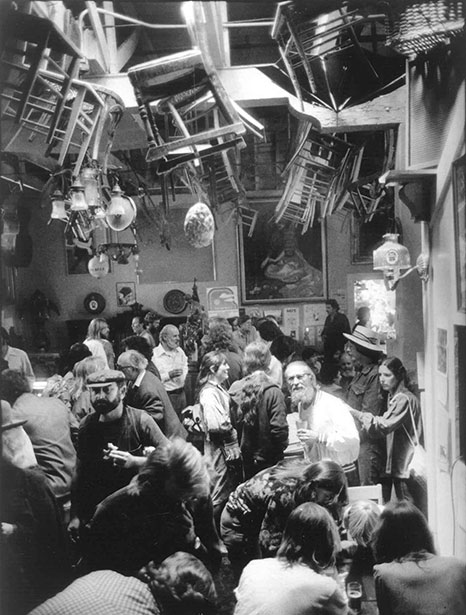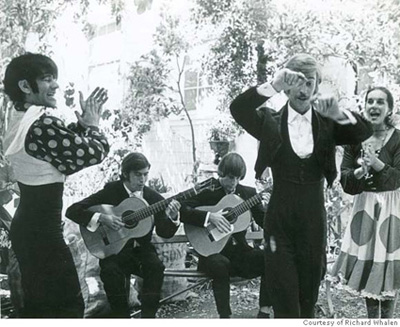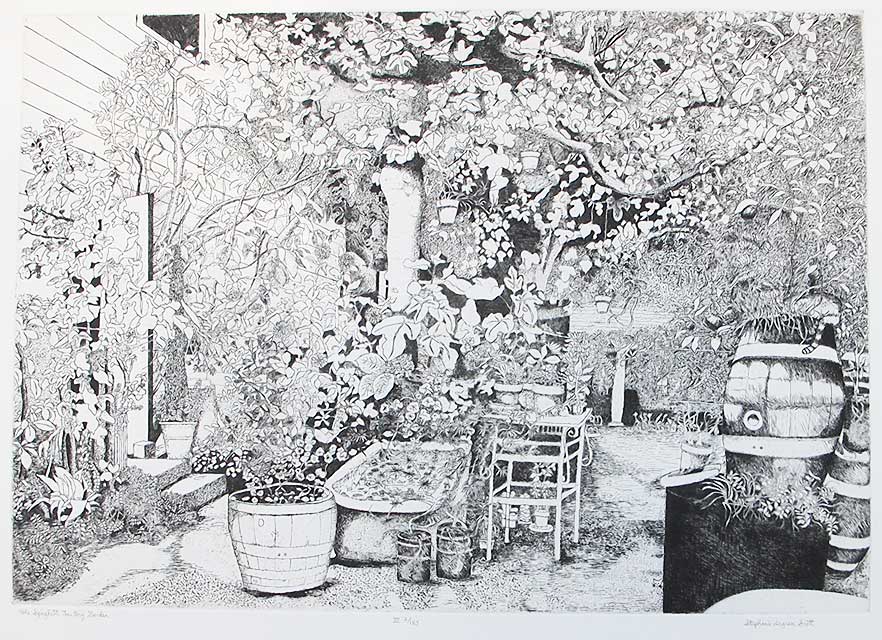The following article By Katherine Petrin discusses The Old Spaghetti Factory
This is the first in a series of articles on North Beach’s landmark buildings.
Imported olive oil and cheese warehouse, seltzer water bottling plant, cabaret, art gallery and res- tauant — how many lives may a building have? Consider this question as you pass by San Francisco
Landmark No. 127 at 478 Green Street.
Within North Beach there are a number of desig- nated landmark buildings and sites. Some of these are quite well-known and easily recognizable, such as Coit Tower, St. Francis of Assisi Church and Washington Square. Because buildings, objects and sites can be landmarked for historic significance or other reasons, not only for impressive architecture, the landmark sta- tus of an unassuming building might come as a surprise to some readers. One such building is the Old Spaghetti
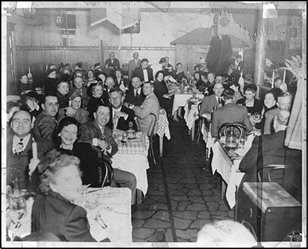
Interior of Old Spaghetti Factory, c. 1950s
photo: courtesy sAn FrAncisco history room, sF public librAry
Factory, a former industrial structure at 478 Green St., between Grant and Kearny, San Francisco Landmark No. 127. The building is currently occupied by Bocce Café and Maykadeh restaurant.
The construction date of this building can be traced to the immediate post-earthquake and fire era. Its first owners, the Granucci Bros., were importers of olive oil and cheese. In 1911, it operated as a seltzer water bot- tling plant. Later, Baccigalupi, Casaretto & Demartini, proprietors of the Italian-American Pasta Co., operated a pasta factory there from 1912 until 1955.
Built by contractors Saraille and Lagomarsino, this three-story building was built as a factory and warehouse. It was not architect designed. The utilitar- ian, wood-frame structure measures 48 feet in height, has horizontal wood siding, and 4-over-4 double-hung windows. As an industrial building, it was built for function without ornamental detail typical of the era or even a cornice. Unlike all other buildings on the block and most in the neighborhood, the Old Spaghetti Factory building is detached, set apart from neighbor-
ing buildings with open passages on the east and west sides. Manufacturing facilities were often built as stand- alone structures to facilitate access and the delivery and shipping of materials and goods. Of greater importance, within a predominantly residential neighborhood, the increased risk of fire in industrial settings and the fear of it spreading to adjacent structures meant that indus- trial buildings were often detached.
In the 1950s, a major fire occurred in the pasta factory. It was renovated and sitting vacant when entre- preneur Frederick Walter Kuh saw it in 1956. Freddie, a Chicago native and former resident of Paris, was then a waiter and bartender at the Purple Onion. He jumped at the chance to take over the raw space for a rent of $300 a month. Within the former industrial facility, Freddie opened the Old Spaghetti Factory and Excelsior Coffee House, launching a new and colorful chapter in the building’s history.
Freddie referred to himself as a “Bohemian busi- nessman.” His operation — cafe, restaurant, theater- cabaret and art gallery — was a “smash” from the day it opened, according to newspaper accounts. Also inside was the “Kuh Aud.,” an auditorium or open space for cabaret and musical performances, and the adjoining Flamenco Theater, a replica of an Andalusian café that operated for more than 20 years as a showcase for Flamenco dance, song and guitar.
A 1979 article in the San Francisco Sunday Examiner & Chronicle quoted former employee Becky Jenkins as saying that Freddie was sharp at spotting talent and good people. He made the Factory into a haven for homosexuals in the days before there was a gay rights movement. Freddie thrived in the outrageous environment that was the Old Spaghetti Factory, creat- ing a place that was more of an “orphanage commune” than a restaurant. Some of Freddie’s loyal staff were archly referred to as “otherwise unemployable.”
The Factory was a true original, appreciated for its eclectic décor, Bohemian clientele, affordable pasta fare, live entertainment, funky vibe and high-spirited staff. The place was furnished with items from Fred’s person- al collection of Victoriana, random kitsch, architectural castoffs and paintings and sculpture done by friends. Musicians who played at the Old Spaghetti Factory
The photo was taken in the Spaghetti Factory Garden
Where Stephanie's etching was drawn
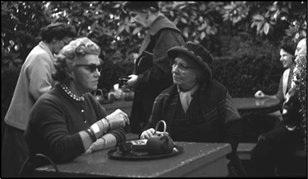
Old Spaghetti Factory courtyard, c. 1950s
photo: courtesy sAn FrAncisco history room, sF public librAry
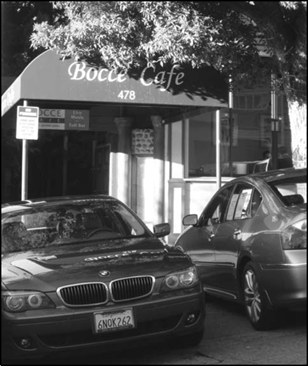
Former site of Old Spaghetti Factory today.
photo: Julie JAycox
included Arlo Guthrie, the Congress of Wonders, Dino Valente, Ramblin’ Jack Elliot and Dan Hicks and His Hot Licks.
The Factory survived until 1984, the year Freddie sold the business. The memorabilia and furnishings of the Old Spaghetti Factory were offered through an onsite auction by Butterfield’s the same year. From
1956 through 1984, the Old Spaghetti Factory was North Beach’s hub of artistic activity, opera, flamenco and cabaret, attracting artists and writers, neighbor- hood folks, Bohemians and Beats. (And, yes, a film has been made. Look for the next screening of “ The Old Spaghetti Factory” (2009) by filmmakers William Farley, Mal Sharpe and Sandra Sharpe.)
It was designated San Francisco Landmark No.
127 in 1981 on the basis of its significance as a cultural and social center in North Beach. The landmark case report further stated that “the Beatnik era was born in the district and its leaders very quickly associated themselves with the Spaghetti Factory; Ferlinghetti and Ginsberg in poetry and Kerouac in prose.” Other notable individuals from the arts who have been associ- ated with the Old Spaghetti Factory are photographer Jerry Burchard, the Kingston Trio, flamenco dancer Cruz Luna, Richard Brautigan and Robin Williams, to name a few.
The Old Spaghetti Factory was also considered to be significant as a successful example of an adaptively reused building, converted from industrial use to a cafe, cabaret and restaurant. During the designation process, Landmarks Preservation Advisory Board member Jean Kortum said,“ There is hardly anyplace more indigenous to the culture of North Beach than a pasta factory.” |
